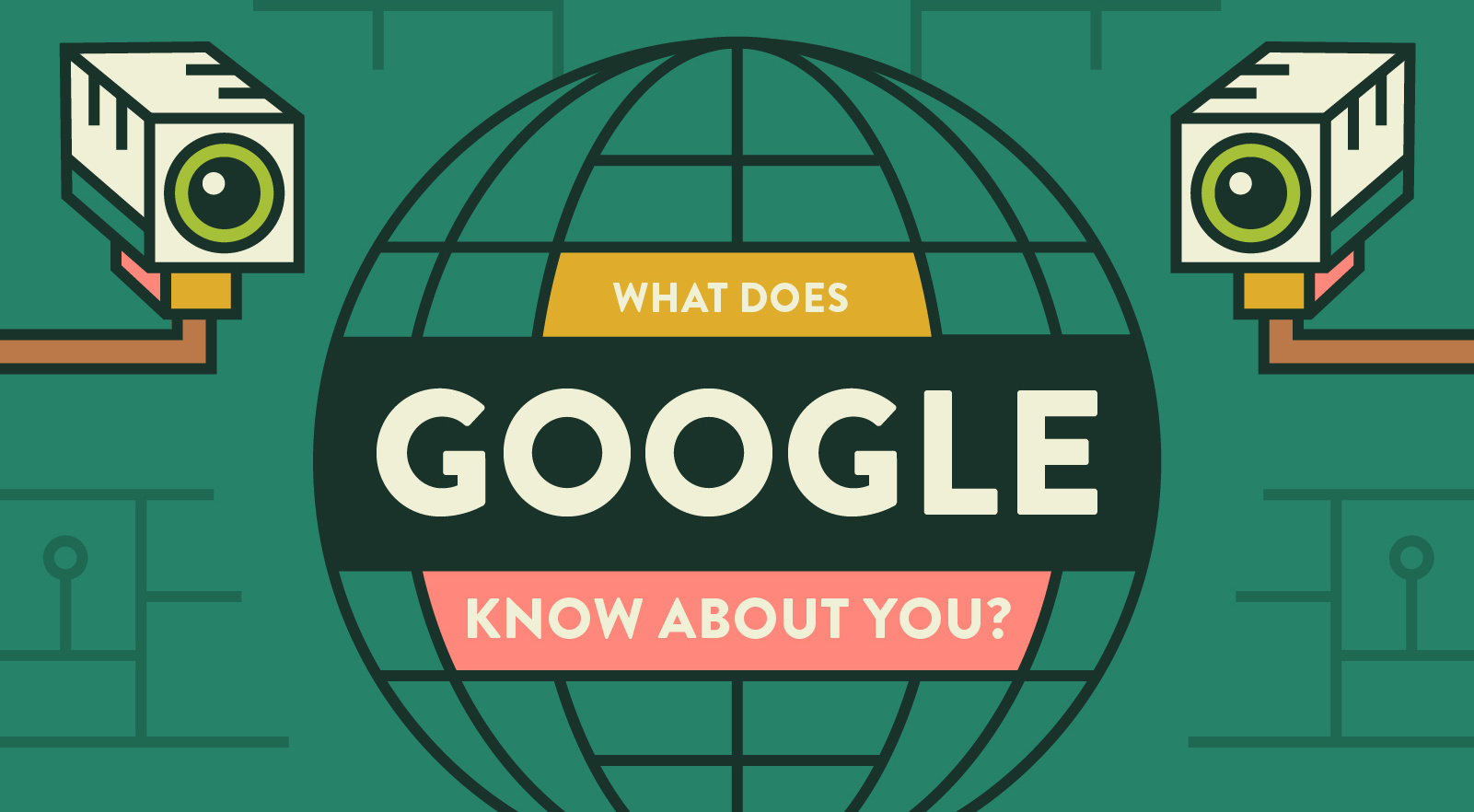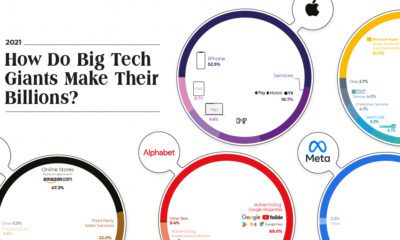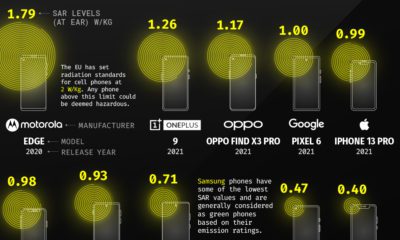And while there are many varieties of data clogging up the internet’s bandwidth, there is one specific type of data that is known to be particularly lucrative: personal data. Like many other enterprising tech giants, Google must accumulate massive amounts of personal data to monetize its services – and in the process, the company develops an astonishingly robust picture of what you’re all about.
What Google Knows
Today’s infographic comes to us from TheBestVPN and it shows what Google knows about you, how the tech giant gathers that information, and a few solutions to stop Google from tracking you.
Through its various apps and services, Google can craft a robust profile on you and your activity on the internet. Google, like Facebook, uses this personal information to target customized advertisements to you, however you decide to use the internet. This can be via search, mobile phone, Gmail, Youtube, or other apps that run ads connected to the Google network.
Crafting a Perfect Profile
Here is what Google knows about you, based on this information: Who You Are Google knows what you look like, what you sound like, your political and religious beliefs, and how healthy you are. The search giant also knows if you have children, or if you have specific dietary restrictions. Where You’ve Been Google uses location tracking to know where you live, where you work, and everywhere you’ve traveled. Who Your Friends Are Google knows who you talk to, and what you talk about. It also knows who you’ve been with, and when. What You Like and Dislike Based on your search queries, Google knows the food, books, movies, videos, and stores that you like or dislike. Your Future Plans Your search queries tell a story about what you are thinking about, including your future plans. Have you started searching for information about parenting techniques? If so, Google knows that you are expecting. Your Online Life Google also knows all of the websites you’ve visited, your data that autofills, and your bookmarked pages.
Opting Out
If you really want to decrease the amount of data that Google has on you, there are a few options available, including:
Adjusting privacy settings Using private browsing Using a different browser for search Turning of your location settings Deleting your Google accounts Using a VPN
Of course, not many of these options are particularly convenient – so get used to the idea that Google will continue to know more and more about you as time goes on.
on But fast forward to the end of last week, and SVB was shuttered by regulators after a panic-induced bank run. So, how exactly did this happen? We dig in below.
Road to a Bank Run
SVB and its customers generally thrived during the low interest rate era, but as rates rose, SVB found itself more exposed to risk than a typical bank. Even so, at the end of 2022, the bank’s balance sheet showed no cause for alarm.
As well, the bank was viewed positively in a number of places. Most Wall Street analyst ratings were overwhelmingly positive on the bank’s stock, and Forbes had just added the bank to its Financial All-Stars list. Outward signs of trouble emerged on Wednesday, March 8th, when SVB surprised investors with news that the bank needed to raise more than $2 billion to shore up its balance sheet. The reaction from prominent venture capitalists was not positive, with Coatue Management, Union Square Ventures, and Peter Thiel’s Founders Fund moving to limit exposure to the 40-year-old bank. The influence of these firms is believed to have added fuel to the fire, and a bank run ensued. Also influencing decision making was the fact that SVB had the highest percentage of uninsured domestic deposits of all big banks. These totaled nearly $152 billion, or about 97% of all deposits. By the end of the day, customers had tried to withdraw $42 billion in deposits.
What Triggered the SVB Collapse?
While the collapse of SVB took place over the course of 44 hours, its roots trace back to the early pandemic years. In 2021, U.S. venture capital-backed companies raised a record $330 billion—double the amount seen in 2020. At the time, interest rates were at rock-bottom levels to help buoy the economy. Matt Levine sums up the situation well: “When interest rates are low everywhere, a dollar in 20 years is about as good as a dollar today, so a startup whose business model is “we will lose money for a decade building artificial intelligence, and then rake in lots of money in the far future” sounds pretty good. When interest rates are higher, a dollar today is better than a dollar tomorrow, so investors want cash flows. When interest rates were low for a long time, and suddenly become high, all the money that was rushing to your customers is suddenly cut off.” Source: Pitchbook Why is this important? During this time, SVB received billions of dollars from these venture-backed clients. In one year alone, their deposits increased 100%. They took these funds and invested them in longer-term bonds. As a result, this created a dangerous trap as the company expected rates would remain low. During this time, SVB invested in bonds at the top of the market. As interest rates rose higher and bond prices declined, SVB started taking major losses on their long-term bond holdings.
Losses Fueling a Liquidity Crunch
When SVB reported its fourth quarter results in early 2023, Moody’s Investor Service, a credit rating agency took notice. In early March, it said that SVB was at high risk for a downgrade due to its significant unrealized losses. In response, SVB looked to sell $2 billion of its investments at a loss to help boost liquidity for its struggling balance sheet. Soon, more hedge funds and venture investors realized SVB could be on thin ice. Depositors withdrew funds in droves, spurring a liquidity squeeze and prompting California regulators and the FDIC to step in and shut down the bank.
What Happens Now?
While much of SVB’s activity was focused on the tech sector, the bank’s shocking collapse has rattled a financial sector that is already on edge.
The four biggest U.S. banks lost a combined $52 billion the day before the SVB collapse. On Friday, other banking stocks saw double-digit drops, including Signature Bank (-23%), First Republic (-15%), and Silvergate Capital (-11%).
Source: Morningstar Direct. *Represents March 9 data, trading halted on March 10.
When the dust settles, it’s hard to predict the ripple effects that will emerge from this dramatic event. For investors, the Secretary of the Treasury Janet Yellen announced confidence in the banking system remaining resilient, noting that regulators have the proper tools in response to the issue.
But others have seen trouble brewing as far back as 2020 (or earlier) when commercial banking assets were skyrocketing and banks were buying bonds when rates were low.

















